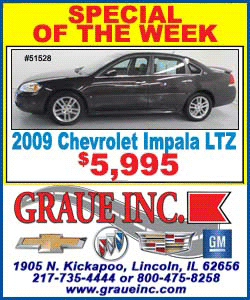|
New Adidas CEO sets off
in pursuit of Nike
 Send a link to a friend
Send a link to a friend
 [September 29, 2016]
By Emma Thomasson [September 29, 2016]
By Emma Thomasson
BERLIN
(Reuters) - Closing the gap on clear market leader Nike is the challenge
facing new Adidas boss Kasper Rorsted when the Dane takes charge of the
world's second biggest sportswear brand from the start of October.
Investors are banking on Rorsted, 54, repeating improvements to
profitability he achieved at consumer goods maker Henkel and the Adidas
share price has risen by around two thirds since his appointment was
announced in January.
Ingo Speich, a fund manager at Adidas shareholder Union Investment, said
he hopes Rorsted will scrutinize the Adidas product portfolio and its
sales structure as the first steps to boosting lagging margins.
"I expect small measures rather than a bombshell. But in 12-18 months,
if the margin is still where it is now it will be difficult for the
shares," said Speich, a critic of outgoing Adidas Chief Executive
Herbert Hainer.
Rorsted's performance at Henkel, the maker of Schwarzkopf shampoo and
Loctite glue, is being examined for clues as to what he will do at the
sportswear group which supplies soccer jerseys to Manchester United and
world champions Germany.
At Henkel, Rorsted culled 80 percent of the firm's brands, pushing top
names such as Persil at the expense of local labels. He also kept a
tight control on costs, shifting some head office functions to "shared
service" centers in lower-wage countries.

Investors also want Rorsted, who earlier in his career worked for U.S.
firms Compaq and Hewlett Packard, to maintain the focus on reviving the
Adidas brand in the United States. The Dane spent a lot of time there in
the last few years as he overhauled Henkel's U.S. business.
Adidas has started to chip away at Nike's dominance in the U.S. market
thanks to heavy marketing spending and collaborations with singers such
as Kanye West and Pharrell Williams as well as top sports stars.
One investor said their research suggests a rebound in the Adidas brand
has been limited to the lifestyle segment in the biggest U.S. cities so
far and it still has work to do in the rest of the market and in
performance sports.
A quarterly earnings report from Nike this week showed it was feeling
the effects of increasing competition from Adidas and Under Armour.
ADVANTAGE NIKE
Nike's entrenched strength in its home U.S. market helps explain much of
its advantage over its German rival in profitability.
It is also what drove Hainer to buy Reebok in 2005 for $3.8 billion, but
the strategy backfired as the brand has since floundered, with some
investors keen for it to be sold.
Hainer, a Bavarian who is a supervisory board member of German soccer
champions Bayern Munich, has been chief executive since 2001.
His critics say he failed to improve profitability even as sales rose by
two thirds in a decade. The operating margin was stuck at 6.3 percent in
2015 versus 14 percent at Nike.
Some investors hope Rorsted will scale back new store plans to be more
like Nike, which focuses on flagship stores in top locations combined
with e-commerce.
Adidas had 2,722 stores at the end of last year and plans to add another
500-600 by 2020 and quadruple ecommerce sales to 2 billion euros ($2.2
billion) by then. Nike is more ambitious -- targeting $12.5 billion from
ecommerce by then.
Rorsted, who formally takes charge on Oct. 1 after shadowing Hainer
since August, was chosen after new investors including Egyptian tycoon
Nassef Sawiris, Southeastern Asset Management founder Mason Hawkins and
Belgian billionaire Albert Frere bought stakes in the company last year.
[to top of second column] |

Prototypes of Futurecraft 3D shoe are pictured during a presentation
of the first Adidas shoe from its new manufacturing process,
Speedfactory in Berlin, Germany September 21, 2016. REUTERS/Stefanie
Loos

Sawiris and a representative of Frere have since taken seats on the Adidas
board. Sawiris and Hawkins have also set up Southeastern Concentrated Value (SCV),
a vehicle to spur boardroom change and influence strategy at firms they invest
in.
"We believe there is a lot of low-hanging fruit that Mr. Rorsted can address to
get to that 10-11 percent range. Approaching Nike is going to take some more
work and heavy lifting," said Scott Cobb, a managing partner at SCV.
Hainer,
stepping down at age 62, has already started harvesting some of that fruit --
announcing plans to sell the loss-making golf business and improving the U.S.
business after Adidas fell into third place behind Under Armour in 2014.
REEBOK'S FUTURE
Investors expect Rorsted to draw on his Henkel experience to make sourcing,
logistics and advertising more efficient, although the spiraling cost of top
sports sponsorships means it will be hard to bring down marketing spending.
One way to boost efficiency would be to further simplify the product range.
Adidas already plans to cut the number of different models by a quarter by 2020
to focus on top sellers like retro Superstars and UltraBoost running shoes.
Some investors want Rorsted, who played handball on the Danish youth team and is
a keen skiier and mountain biker, to consider selling Reebok.
"Reebok needs to be closely monitored and perhaps reexamined. Reebok waters down
margins for the whole company," said Tim Albrecht, a fund manager at Deutsche
Asset Management, a top 10 shareholder in Adidas.
Hainer has repeatedly ruled out selling Reebok, saying now it has been revamped,
the brand is well positioned to benefit from booming participation in fitness.

Bankhaus Lampe analyst Peter Steiner said a sale could be harder than it might
seem as Reebok has become very intertwined with Adidas.
He puts a 30 percent chance on a sale of the business, which he estimates is
worth around 2 billion euros, potentially attracting interest from rivals like
VF Corp <VFC.N> or Asian sportswear firms.
Rorsted gets his first opportunity to speak in public at third-quarter results
on Nov. 3, but analysts only expect substantive comments at full-year figures in
March.
(Editing by Keith Weir)
[© 2016 Thomson Reuters. All rights
reserved.] Copyright 2016 Reuters. All rights reserved. This material may not be published,
broadcast, rewritten or redistributed. |